
Would you like to start a conversation with other industry leaders to brainstorm a challenge or to just know more on a particular topic?
Engage in online discussions with your Peers
Start NowEvery passing year changes the world drastically in an unpredictable manner. Come 2025, the world will be very different from what we can possibly imagine today. It is likely to offer some unique challenges and opportunities to us. The way technology is evolving predicting for one year could turn out to be a misjudgment; for five years, it could well be a colossal blooper. This document attempts to list a few of the major likeliest landmarks.
The covid-19 pandemic and its related lockdown have provided a challenge and an opportunity to look at things differently and be prepared for something we cannot think of. The year 2020 has already reset lot of things and the world is preparing itself to a different paradigm.
The Good news is that , owing to deep paradigm shifts , innovative technologies will emerge that will solve some of the world's most pressing problems.
While experts hugely differ on such “large scale” predictions, some of the commonly accepted ones that impact our personal and business life could be as follows.
AGlobal
A Changing World Order
By 2025, we would see a few country mergers. ‘At risk’ nations will seek to come together to create the critical economic strength and attract the investment required to serve their populations and compete in the combative and hyper-connected era.
Pairing with the Ecology
By 2025, nations will be majorly forced to eliminate their carbon footprint. At least 20% of the world’s economies would have reached a net-zero state. Scientist, global think tanks and common citizens will coerce governments to consider toxic generation, waste management and energy conservation as a part of strategic public policy. New technologies will not only reduce the world’s emissions – there will be a sustainable innovation/ revolution in the industrial world to boost production techniques not in conflict with the environment. The world situation has brought sharp focus and public attention on the need to prepare an action plan to deal with threats to our very existence.
Drones to the Rescue
While technology will continue to advance in the fields of engineering, intelligence, defense, services and other high impact industries, some of the uncommon areas could well be the use of sophisticated drones. Drone usage in agriculture will be adopted globally with over 50% of the countries commonly using it to tend to farm and livestock.
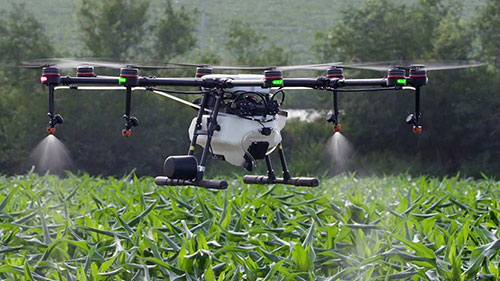
Drones will also be extensively used in weather prediction, high-speed telecom transmission, transportation, seismography, disaster management, long distance medical treatment, and several other walks of life. Drone movement will be regulated by a centralized national body with automated inbuilt sensor technology to avoid mid-air mishaps and to prevent access to no-fly zones.
A Far-reaching Energy Transformation
Energy will become the currency of the future. By 2025, the first modicums of this would have already been put in place. Fossil fuels would have substantially reduced. The world is already leaning very heavily towards renewable sources of energy.
In the next 5 years, some 10% of the world’s energy needs and almost 50 % of the new energy production would be from renewable sources.
Automobiles, already hybrid and electric will soon begin the use alternative fuels, such as atmospheric hydrogen, water and even miniaturized atomic capsules – all fuels with absolutely zero carbon emission. Larger energy guzzling industries would bank on solar, wind, rivers, tidal and atomic. Storage devices to capture huge energy releases by lightening are being researched as we read. Once breakthrough happens, 2025 could see the first of such gigantic lightening attracting equipment, its storage and distribution. Though it is not likely to happen in the next five years, there is enough research happening to harness the energy from the movement of the heavenly bodies such as comets, satellites and possibly the cosmic microwave background radiation.
Literacy & Education
By 2025, even the poorest countries of the world would have 70% or more of their population with some form of formal education with capability to read and write.
For the top 5 countries this number would be close to 100%. Around 50% of the world population would be educated at levels of lower secondary or above. The number of people with no education will decrease continuously and that by the end of this century virtually all people in the world will have received some level of education.

BBusiness
VR/AR is the Next Wave in AI
Goldman Sachs is betting on the virtual and augmented reality industry to become an $80 billion market by 2025 – it is around $7 billion right now. This will be the optimized way of doing business. Business landscape will change due to fundamental changes in production planning, manufacturing, supply chain, inventory management, customer behavior patterns, machine design, asset assignment, and manpower management. Cutting edge technologies such as block chain would have replaced several process related activities. Companies that design and build products will rapidly adopt cloud-based technologies to aggregate, intelligently transform, and process data from manufacturing lines throughout their supply chains. Data streams and intelligent algorithms will enable manufacturing lines to continuously optimize towards higher levels of output and product quality – reducing overall waste in manufacturing.
As competition tightens and margins shrink, companies not under ‘absolute agile’ model will disappear – to be quickly replaced by novel, innovative and nimble ones.
Real Estate May Not Be So Real
The demand for commercial space will drop by 50%, if not more. By 2025, we can expect to see AI technology built to connect people at a human level and drive them closer to each other, even when they are physically apart. Amongst other things, the current pandemic has shown us the importance of technology for maintaining and facilitating communication - not simply for work purposes, but for building real emotional connections. The line between physical space and virtual will forever be blurred, as we overlay multiple layers of digital sensory augmentation over our physical environment. Tech capabilities will develop to provide fully digitalized alternatives, moving beyond simple live streaming into full-connect experiences. This will all be coupled with advanced levels of cyber security and data privacy in order to create confidence among consumers.
Corporate Musical Chairs
Half of the Fortune 500 companies in 2025 will be firms that did not even exist in 2015. We will see an ever-increasing number of so called ‘exponential companies’ that achieve rapid rates of growth by using science and technology to disrupt old industries and create new ones.
Traditional companies have begun to lose ground for some time already. Newer industries will gain rapid traction, as they will begin to offer more consumer friendly and innovative products and services. Currently fledgling industries in the field of nuclear medication, cyborg technology, alternative foods, space habitation, and several other seemingly ‘science fiction’ industries would gain rapid prominence.

The Money Market
By 2025, the financial services landscape will have been transformed by digital currencies like the Bitcoin and other forms of cyber currency. Around 10% of the economies would have accepted these currencies as official alternate currencies in their home countries. Transactions in cyber currencies would become legal in around 25% of the countries. The cyber currency format would alter from the present to include a trail to their underlying fiat currencies. A wave of new providers will mushroom offering crowd based financial solutions for everything - from insurance to equity investment to commercial financing.
Artificial Intelligence to Augmented Intelligence
30% of corporate audits worldwide will be performed by artificial intelligence. Such audits would be governed by regulators, shareholders, government and possibly other stakeholders, such as contractors, dealers, suppliers, lenders, etc. Super intelligent, machine level, investigative audits would be carried out both remotely and in an infused manner.
Technologies, such as blockchain, capable of ‘sniffing’ out single anomalies and trends would find huge traction in establishing corporate integrity.
Internet of Everything
More than 9 billion devices are currently connected to the internet – that number is estimated to grow between 50 billion to nearly 1 trillion in the next 5 years. Organizations will begin monitoring and securing products, systems, devices and even people exclusively using net based systems. By 2025, mobile connectivity could be accessed by an additional 4.3 billion people, with the entire population of the world using it. By then there would have been more mobile phone produced than humans ever lived on earth. 5G will create markets that we can only imagine - like self-driving bots and mobility-as-a-service economy - enabling next generations to invent thriving markets and prosperous causes. Interfaces, formats, sensors and apps will evolve as mobile computing devices dominate internet connectivity.
We will see bots taking over manual processes and goods and services delivered faster and safely with zero or minimal human touch.
The 5G networks would resolve this lack of network reliability and offer high capacity services like telehealth, telesurgery and ER services. Businesses can offset the high cost of mobility with economy-boosting activities including smart factories, real-time monitoring, and content-intensive, real-time edge-compute services.
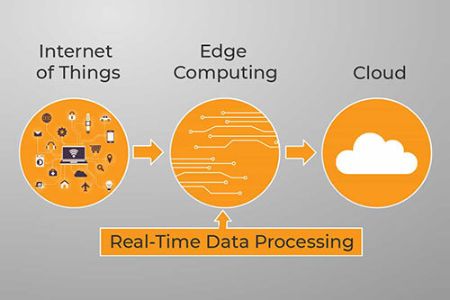
Data Privacy
By 2025, there will be much focus on data and personal privacy that new laws and stringent rules will be enacted. Physical location of servers will be important and information going out of the country will be strictly monitored. A global regulatory body would have been setup to establish data security standards. Companies specializing in designing security systems will feature in the top brands of the world. Security certification from regulators would become mandatory before an app is launched. New apps asking for data permissions will undergo changes and the usage of that information will be highly monitored.
Distance Learning
As in remote working, remote learning will become common in 2025. It is estimated that almost 80% of the new content taught would either be computer-based courseware or instructor led, through conferencing. Technologies involved in distant learning are similar to those for remote work and also include virtual reality, augmented reality, 3D printing and artificial-intelligence-enabled robot teachers. By 2025 new technologies would have been put in place to enable facial recognition, span of attention, intelligence in questioning, scoring & certification, skill gap analysis, courseware recommendation, and several others. AI and ML will enable flexible programs, capable of carrying out real-time course modification based on assessment of user absorption. Programs will self design themselves to suit every individual user.
CPersonal
Robotics Become Real
By 2025 robots will have entered every aspect of human life and will be commonplace - performing functions as diverse as nursing, complex surgery, policing & security, construction, retail and hotel services. Robotics have already entered our lives in the form of smart homes and smart cars.
By 2025, between 10 to 25% of human motor functions would have been robotized – in the developed countries.
One in every 4 cars will be an electric car. Driverless cars would have found a market and a few smart cities would have established designated areas where such cars can operate with ease. Smart kitchens will turn cooking into an interactive experience. Kitchen devices will be capable of self-ordering refills.
Entertainment
Due to closing of cinema halls and other entertainment events involving large gatherings there has been a significant reduction in in-person interactions. Creativity has brought the party online.
Cloud raves and online streaming of content have gained traction around the world. More and more films will be released using the OTT platforms. Museums and international heritage sites will start offering virtual tours. There has also been a surge of online gaming traffic.
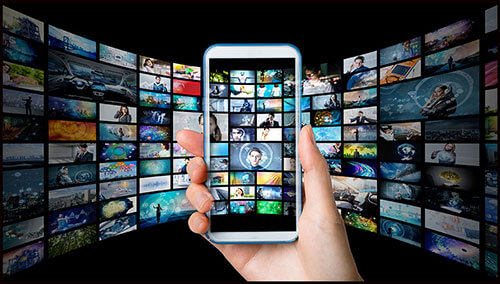
By 2025, the top 20 countries of the world will have less than 20% of the current in-person entertainment venues, with the top 5 having none.
Healthcare Paradigm Shift
The significant shift that is likely to happen in the next five years is the paradigm shift from curative to preventive treatment. The healthcare thinking will change and will include focus on plant-rich, nutrient-based diets. New technologies are likely to be focused on foods with short growth cycle, longer shelf life and very high nutrient value. A new form of biology-based technology will change our diets. Consumers will be more aware of the importance of their underlying health and will increasingly demand healthier food to support their natural immunity. People will be more informed about nutrition. The global food industry will change its products and include a wider, broader range of products to support healthy living.
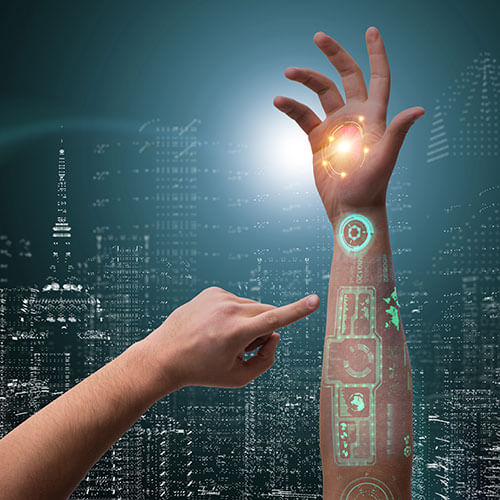
As a result, morbidity, mortality and costs will decrease in acute conditions, such as infectious diseases, because only the most severe cases will need additional care. Tele-health will be the way going forward in providing essential primary care. Wearable, personal IoT devices will be used to track vital signs. Chatbots will be used to do the initial diagnoses based on symptoms identified by patients. Governments will substantially increase spending on improving the healthcare systems in countries. Governments will also incentivize people to take care of themselves in an effort to reduce unsustainable costs. By some estimates, by 2025 the global life expectancy will increase by around two years, the fastest since the past. For a few progressive nations such as the North European countries, Australia, Japan and a few others, it could go up by another three to four years.
The Fast Forwarding
The forecasts made above are clearly only indicative. It is not possible to define an exhaustive list. The world will witness several obvious and subtle changes in the next few years. Many of these changes would have naturally occurred in the course of time, with or without covid - for that is the natural trajectory of technology growth. The famous Moore's law on observations and projections of a historical trends indicated a technology doubling rate of two years – a CAGR of ~ 40%. With the arrival of covid, this rate has been significantly revised to six months – a CAGR of 300%. The “fast forwarding” of the doubling rate has forced events that were to naturally happen two years later to happen in six months.
More than anything else, a sense of unpredictability has also set in. The suddenness with which the pandemic has descended upon us and influenced the entire world has made us realize the need to remain prepared at all times. Events such as these or other humanity-impacting crisis will most definitely change the course of history as well as the technology of the future.
ABOUT THE AUTHOR
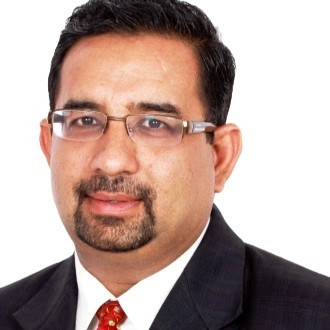
Sanjeev is a senior finance professional, who has led fortune 500 shared services in Finance, IT, HR & Real Estate, Strategy & Transformation. He is a business leader with more than 2 decades of diverse experience in managing multi-geography service delivery; transformation in HR, IT and digital finance; setting up shared services/ BPO centers; shareholder agreement creation/ negotiation; and talent management & succession planning. He is a Ph.D., Chartered Accountant, Cost Accountant, Company Secretary, M Phil, and has worked with Fortune 500 companies like Syngenta, Metro Cash & Carry, Hewlett Packard, Accenture, Standard Chartered Bank and American Express.




